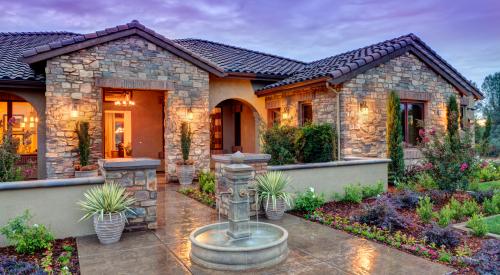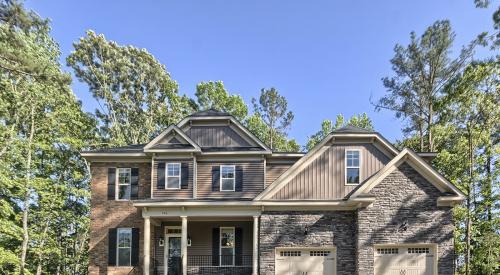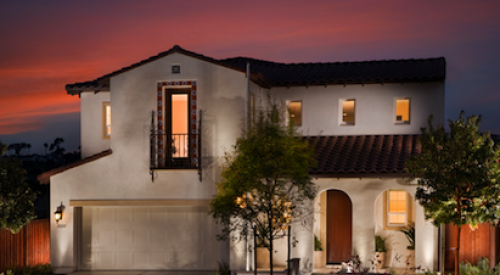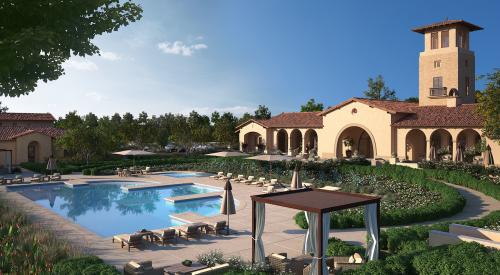For a dozen years or more, production builders have been tinkering with their sales and production processes to get closer to custom. All other things being equal, allowing buyers to make custom changes to standard house plans unquestionably boosts their sales. The trouble is, all those other things never are equal.
"It’s really hard to charge as much as you should for the truly elaborate changes," says Atlanta-based move-up mogul and former PB Builder of the Year John Wieland. "People have a feel for the cost of materials involved, but they have no understanding at all of the soft costs-or what custom changes do to a production builder’s systems.
"In the last couple of years, we’ve come to realize that we can’t do everything. We now say ‘no’ a lot more than we used to."
Wieland is not alone. Even before Lennar’s watershed decision to virtually abandon customization, production builders across the country have slowly backtracked on their commitment to meet the desires of consumers to put their own special touch on a house.
Especially over the past six months, the degree of retreat seems profound, given the vast sums invested over the decade to allow more custom changes. Many builders are spending millions on elaborate centralized design centers to make it easier for customers to make changes and more efficient for the builder to handle them. Still, given the current state of the housing economy, maybe we shouldn’t be so surprised by the backsliding.
"There’s been some retreat on custom changes, but it’s not because the ability to make changes is any less attractive to buyers," says Morrison Homes vice president of sales and marketing John Rymer. "We’ve done it ourselves in some divisions. And it’s purely a function of trying to expedite construction.
"Right now, it’s much harder to get houses closed than it is to get them sold. Anything that makes a house more complex to build slows down construction even more. That’s what’s behind it. But don’t look for this retreat on customization to last very long. With interest rates creeping up, I look for a softening of demand pretty much right across the board. When it gets harder to sell houses, builders will go back to doing whatever is necessary to make that next sale."
Market researcher Cheri Meyn of Genesis Marketing Group in Denver also cites construction difficulties for the retreat from customization. "We see the shift," she says, "but I think it’s mostly because labor is incredibly short here, worse than anywhere else in the country. And we’ve got materials shortages as well.
"We’re sitting on 12,000 units of contracted backlog in the Denver market-houses that have not even started construction. So builders who are taking seven to eight months to build even the simplest house are just unwilling to make changes that will slow them down even more."
In Dallas, the story is much the same. Darling Homes principal Bill Darling says he’s noticed a retreat from customization by the largest builders. "It’s good news for us. I hope they all get out of it. Custom changes are an important niche for us. It’s got a lot to do with the talent pool. Supers are in short supply. Green supers just can’t handle the complexity that customization creates," Darling says.
Jim Rado, David Weekley Homes area president for Colorado and central Texas, echoes that analysis. "Closing ‘on time’ is a joke. We don’t ever promise a closing date. The house will be done when it’s done. PB’s assessment of what’s happening with custom changes is 100% accurate. There’s a shrinking labor pool of skilled trades out there, and a lot of inexperienced supervisory people running the jobs.
"We’ve had to cut back on custom changes, based on the experience level of our teams in the field. Where we have experienced crews, we allow changes as we have in the past. But they do slow down construction. In areas where we’ve had a lot of turnover and have to bring in less experienced supervisory personnel, we’ve limited changes to what’s in our catalog.
"We don’t want to throw curves at crews who are still learning to build our way. We’ve designed a lot of flex options into our plans to help meet the demand for changes."
However, Rado agrees with Rymer that the underlying dynamic of the market favors a quick returnto the trend toward more customization. "We don’t have the discipline, as an industry, to say ‘no’ when a sale is on the line. If sales slow down, builders will go right back to making wholesale changes, no matter what it does to construction operations. If rates go to 9%, you’ll see it."
Rado has a quick definition of the Holy Grail they all seek: "The company that figures out how to give people the opportunity to design the home they really want, and can still deliver that home on time and on budget, is going to make a lot of money.
He speculates that CAD (computer-aided design) in the sales office may be the first step. "To that, add a way to get the purchasing department to price the plan, get vendors to verify product availability, and finally generate a purchase order-so the builder on the job doesn’t ever have to worry about it-that’s where we all want to be," he says.
Rado also has a close-up look at the consumers who are driving demand for custom changes. "We’re so far behind the high-tech manufacturing sector on this, and that’s where my buyers come from. They want what they want, and they have zero tolerance for defects. Dell Computer Corp. just brought 4000 new employees into Austin. They don’t like to hear ‘no.’"
That’s why, even in the face of a tight labor market, many builders - especially in the move-up sector - refuse to back away from customization. "It’s central to our business," says Jack Miller, vice president of marketing for The Drees Company. "It’s been good for us. But these fluctuations in the commitment to allow custom changes are nothing new. It’s short-term thinking.
"Strategically, we’re committed to customization as a process because we think it’s the wave of the future. If that’s a capability we’ll need to sell houses in the future, why not get there first? We’re not waffling."
Toll Brothers CEO and former PB Builder of the Year Robert Toll is even more adamant: "We’re not your average production builder because of our high price point ($400,000 average sale). We got into custom changes a long time ago because our buyers expect it. When we went through that process, we found out that our costs were not accurate. We had no idea of the real cost of a custom change. There’s increased labor, extended construction time, extra supervision, purchasing and administrative headaches-and each of those adds to the cost. We now have the systems to handle it, but it took years to perfect.
What you see as backsliding on customization is probably builders discovering that they’re not making money on changes. But it may also be that the market is just so hot. Why futz around with customizing if it’s costing you money and you can sell houses without it? Eliminating custom changes is really just another form of price increase.
The first thing that goes in a hot market are incentives like free washers, dryers, and love tubs. This may just be the next step.
Most builders price options at 100% mark-up over hard cost. If it costs $2000 in hard costs, they sell it for $4000. But that doesn’t take into account the huge soft costs associated with running a home building company. When you add everything up, it probably totals two-thirds of the sale price of a home. Hard costs may be as little as one-third. So options and custom changes should be priced at three times hard cost. And that’s if you finish on time. If you close a $250,000 house a month late because of a custom change, it has cost you $2000 in time."
However, Toll also agrees that customization will be back in force if and when houses get harder to sell. "If builders need to make changes to sell houses, they’ll do it. Customizing will come back first, then the washers, dryers, and love tubs."
John Wieland says what builders really need is better skills at assessing customers: "We’re trying to do a better job of figuring out their intent before we get pulled into a cycle of never-ending changes.
"A lot of buyers don’t really know what they want. They ask for one change and, if you make it, the next thing you know, they’re back with a list!
"Occasionally, we’ve even gone totally custom and built from a buyer’s own set of plans. But we had a bitter experience with that, so we don’t do it anymore."
Wieland will now try another move on the customization front. He is negotiating to buy a small, custom builder to incorporate into his organization as a separate division. "He would be affiliated with us, but still operate under his own name," Wieland explains.
"When we see those customers who have the money and really need a true custom builder to guide them through a design/build process, we’ll send them to him. In turn, we can help him with bulk buying of materials, lower costs of financing, and better systems for cost control.
However, if Wieland does acquire such a custom builder, that firm will build only in Wieland-developed neighborhoods. "We’ve got a couple of very upscale communities - one with a golf course, another with a marina," he says. "Those locations could take the $500,000 to $600,000 homes that are just above the top end of our production-built price range. The alternative is to sell lots to the custom guys. But we’d like to benefit more directly.
"Our long-term record of profitability on really elaborate custom changes, and especially from true custom homes built from buyers’ plans, stinks," says Wieland. "It stinks on gross margin and it requires more intensive management. But I still don’t want to lose that business, so we’ll try to hand it off to someone set up to handle it better."
Also See:
Fight or Switch












